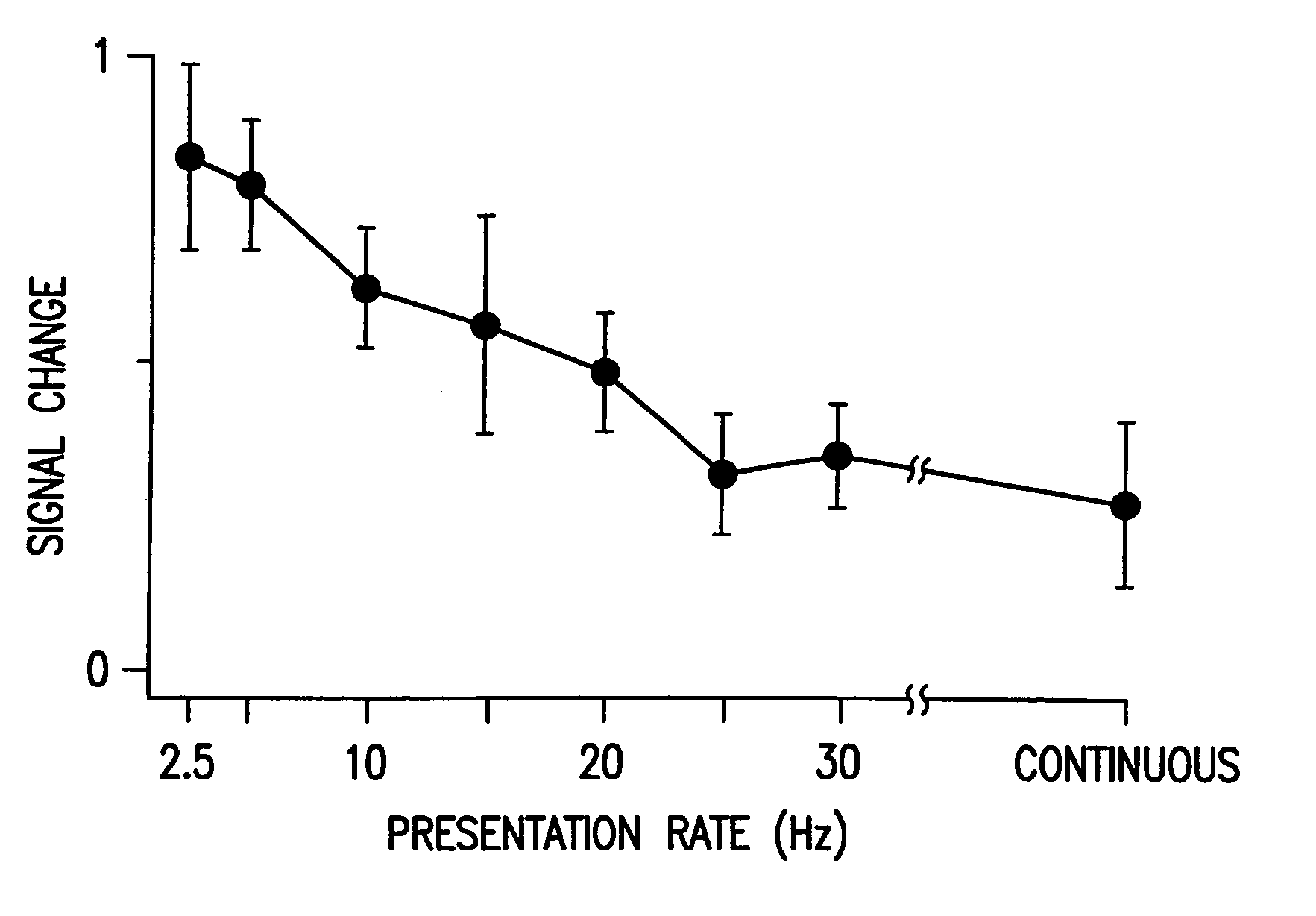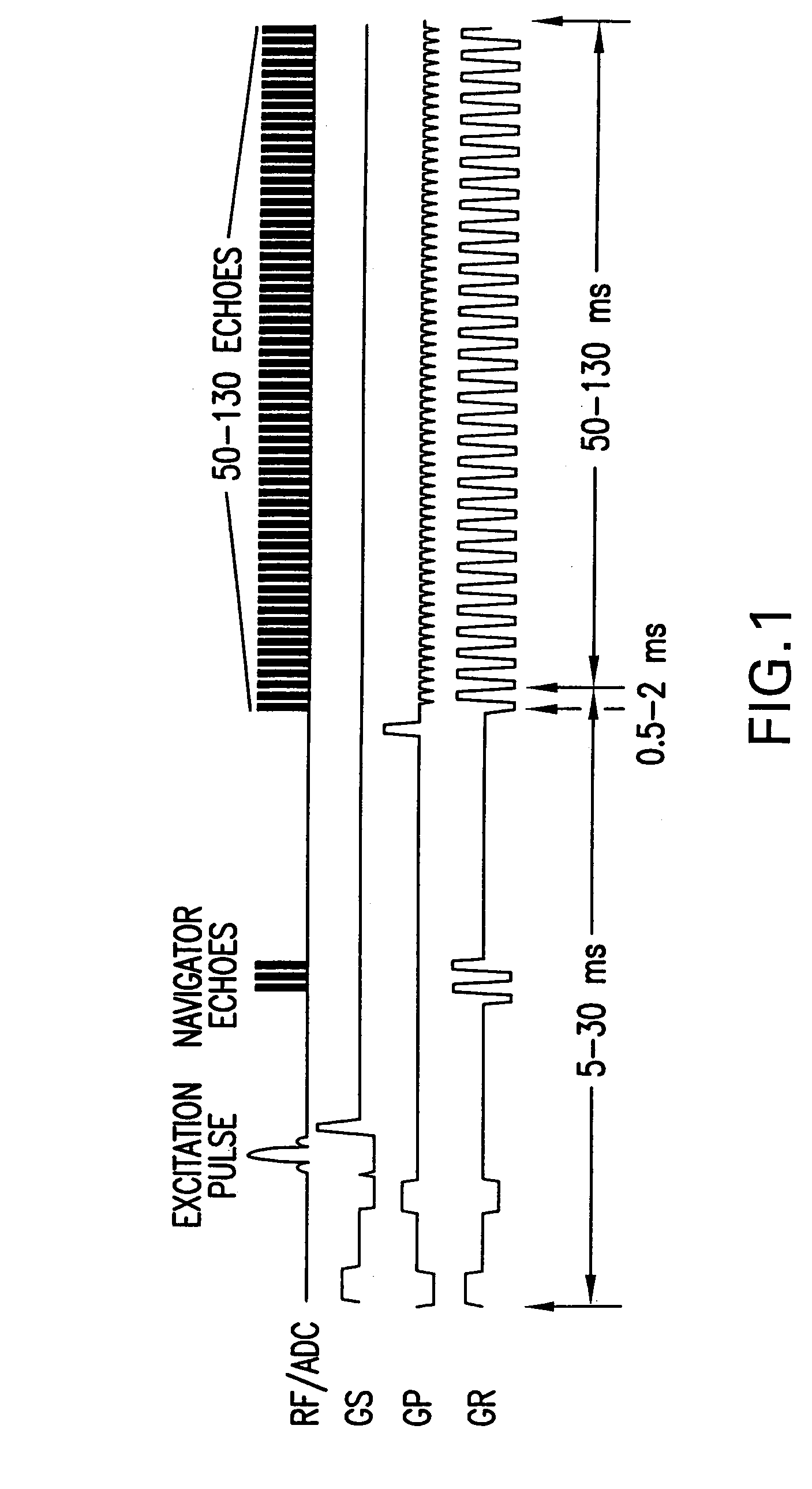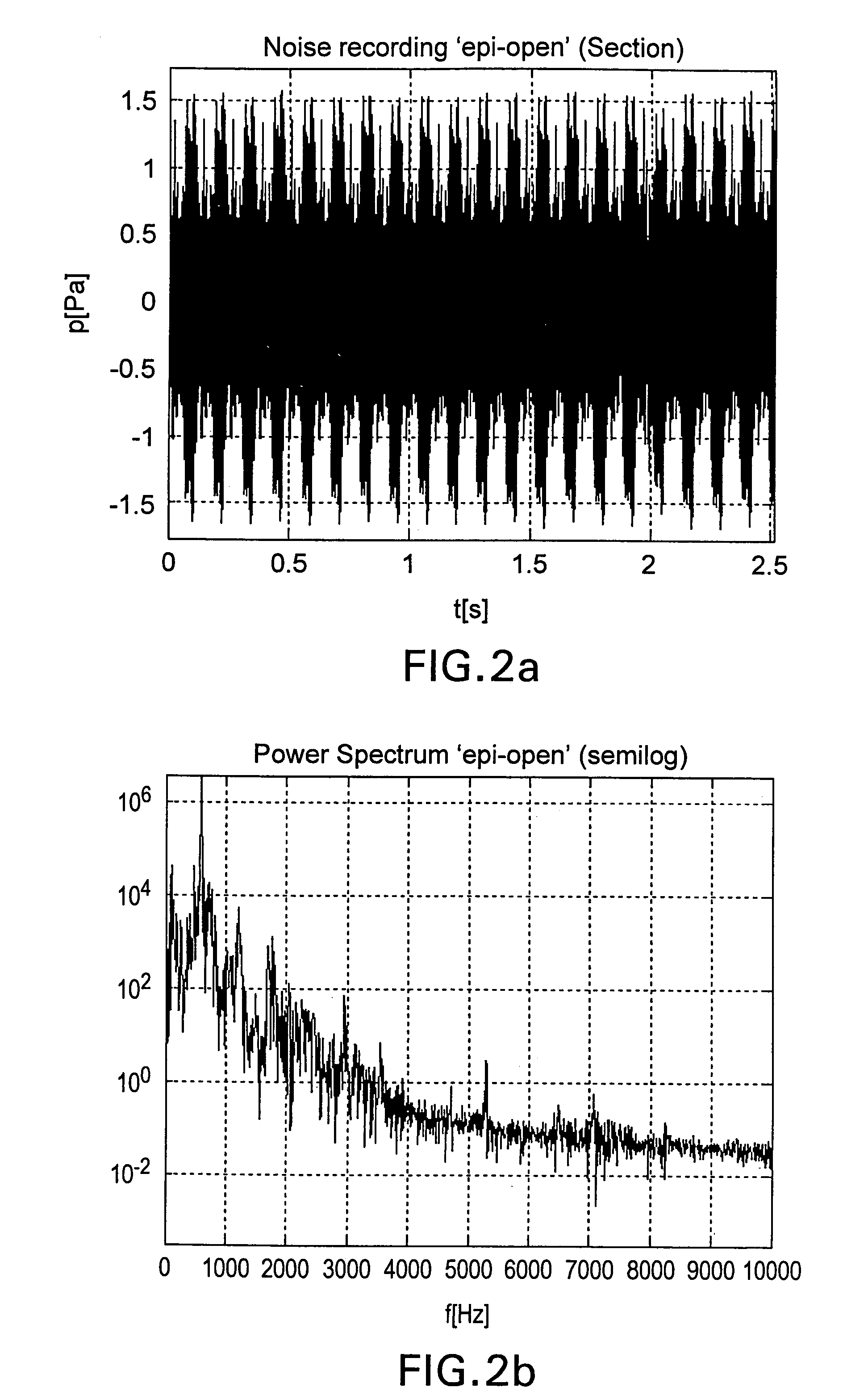Low-impact noise acquisition magnetic resonance imaging
a magnetic resonance imaging and low-impact technology, applied in the field of low-impact noise acquisition magnetic resonance imaging, can solve the problems of monotone background noise and continuous noise, and achieve the effect of reducing the ge-epi background nois
- Summary
- Abstract
- Description
- Claims
- Application Information
AI Technical Summary
Benefits of technology
Problems solved by technology
Method used
Image
Examples
Embodiment Construction
[0056]The present invention pertains to a new LINA-EPI pulse sequence pattern and a method of fMRI scanning that utilizes this new LINA-EPI pulse sequence pattern in order to mitigate the effect of magnetic field gradient noise on the auditory system, as well as on other functional brain centers or systems, of test subjects undergoing FMRI scanning procedures. To mitigate the effect of gradient noise on test subjects, the LINA-EPI sequence pattern in accordance with the present invention results in the generation of a modified, or adapted, gradient acoustic noise pattern that is relatively continuous and monotonous, to which the auditory system exhibits minimized sensitivity. This desired modification of the spectrum of background gradient noise is achieved by using a LINA-EPI pulse sequence, which includes a continuous switching of the reading gradient and the phase blip, as well as a slow ramping of the layer (i.e., slice) and phase coating gradients, as will be described in detai...
PUM
 Login to View More
Login to View More Abstract
Description
Claims
Application Information
 Login to View More
Login to View More - R&D
- Intellectual Property
- Life Sciences
- Materials
- Tech Scout
- Unparalleled Data Quality
- Higher Quality Content
- 60% Fewer Hallucinations
Browse by: Latest US Patents, China's latest patents, Technical Efficacy Thesaurus, Application Domain, Technology Topic, Popular Technical Reports.
© 2025 PatSnap. All rights reserved.Legal|Privacy policy|Modern Slavery Act Transparency Statement|Sitemap|About US| Contact US: help@patsnap.com



